Five major AR exhibitions make memories more meaningful
Catalog
- AR exhibitions combine immersive interactivity, making art engagement no longer passive
- It's Real, Yet Imagined: Applications of AR Technology
- 1.Muséum national d'histoire naturelle:AR Recreates the Jurassic Park
- 2.The Guggenheim Museum Bilbao in Spain: Immersive Textual Art Across Time and Space with AR
- 3.The National Art Center, Tokyo: AI and AR Recreate Childhood by Cai Guo-Qiang
- Sustainable Singapore Art Project Encompassing the Earth through an AR Perspective
- 5.The Keelung Harbor History Museum: AR Reviving the Bustling Port Scene
- Combining experiential marketing with AR art exhibitions offers four significant advantages
- 1.Museums Engaging Cross-Generational Audiences with New Media
- 2.Keeping Memories Active with Augmented Reality
- 3.Extending the Possibilities of Storytelling in Virtual Spaces
- 4.From Individual Immersion to Group Immersion
- Conclusion: See the Real! AR Art Exhibitions Bridging the Virtual and the Real with Shared Empathy!

Driving Cross-Generational Art Engagement and Immersion through Creative AR Exhibitions.
Source: Freepik
AR exhibitions combine immersive interactivity, making art engagement no longer passive
In the book "The Curator’s HandBook," it is pointed out, "Art is becoming more and more ubiquitous in our daily lives, and visiting art museums is gradually becoming a part of life." However, there have been changes in the curation of art museums and the process of visiting them. According to a survey by Statista as of May 2021, new technologies, tools, and digital exhibition formats implemented by museums worldwide show that applications related to AR (Augmented Reality) technology, which involves visual and QR code technologies, ranked third, fifth, sixth, and seventh. It is evident that AR technology is at the forefront of the experiential marketing trend in museum exhibitions. As YouTube co-founder Steve Chen said, "VR is too solitary, AR will change your life." VR requires specialized tech equipment like headsets, controllers, and sensors, while AR only requires a smartphone, tablet, or app.

Based on a survey conducted as of May 2021, it is evident that AR technology is most aligned with the trends in experiential marketing in museum exhibitions.
Source:Statista
Indeed, museums are embracing the journey of experiential marketing. Experiential marketing involves interactions between brands and their audiences through new media, and with the use of AR technology, various marketing themes can be transformed into interactive experiences. What's most important is that AR technology often doesn't require the downloading of applications, which is why businesses of all sizes are investing in AR to enhance consumer engagement and drive sales.
"Certain complex topics are distilled into easily understandable visual images that the audience absorbs almost unconsciously." When exhibitions are curated with AR installations, once people step into augmented reality, they can step into art itself. This mass appeal empowers visitors, making them active participants in the experience. They no longer passively receive information but rather feel and receive more. This journey through the museum merges art appreciation with experiential marketing, creating an immersive and profound experience.
Who says art cannot approach people in a more interactive and enjoyable way? Compared to traditional marketing methods focused on product promotion, experiential marketing places a higher emphasis on consumers, catering to their desires for entertainment, education, stimulation, and challenge. Visitors can use smartphones or AR glasses to scan exhibits or exhibition areas, unlocking additional information, videos, sounds, or 3D models to gain a deeper understanding of the stories or history behind the exhibits.
Once individuals step into the augmented reality created environment, their personal experience becomes an integral part of art engagement.

Augmented reality is readily accessible and has the potential to reach a wide audience.
Source: Freepik
It's Real, Yet Imagined: Applications of AR Technology
Augmented reality (AR) is the process of overlaying images, text, or sound onto content that people can already see. It involves modifying existing images through applications on smartphones or tablet devices. When users stand in a scene and look at their device's screen, objects appear to exist in the real world, creating a "modified version" of reality that is both real and imaginative.
Interactive technology is used to engage a diverse range of generations, with different curatorial themes employing various audience marketing strategies. However, for curatorial units aiming to attract more visitors to museums, the ultimate goal is to create an experience that can be enjoyed by all generations. Nevertheless, there is ongoing research and investigation specifically targeting the younger demographic, who are the primary focus of museum marketing efforts. Understanding the desires of the millennial and Generation Z groups is crucial.
Research conducted by the Interactive Technologies Institute in Portugal in February 2023 revealed that teenagers aged 15 to 19 are excited about interactive technology in museums and aspire to become protagonists in adventurous stories. This survey result aligns with the self-centered and tech-savvy nature of Generation Z.
Museums use storytelling, scenarios, and interactivity to create immersive exhibitions that effectively communicate with people. In the following, we will explore the five most talked-about AR exhibitions in recent years, which have gained popularity among various generations and communities worldwide.

AR Transforms the Interaction Between Art Exhibitions and Viewers.
Source: Freepik
1.Muséum national d'histoire naturelle:AR Recreates the Jurassic Park
In June 2021, the Muséum national d’Histoire naturelle in Paris introduced an augmented reality experience called "REVIVRE" (Relive) using Microsoft HoloLens. This experience allows visitors to interact face-to-face with digitally recreated extinct animals, even though these animals no longer exist in the real world.
Immerse yourself in the Gallery of Evolution's endangered and extinct species exhibit, embarking on a unique augmented reality journey. This AR experience features 11 species that are now extinct or on the brink of extinction, including dodos, saber-toothed tigers, Steller's sea cows, elephant birds, and more. It's like a 21st-century Jurassic Park coming to life, captivating visitors of all ages and making them fans of the Muséum national d’Histoire naturelle in Paris.
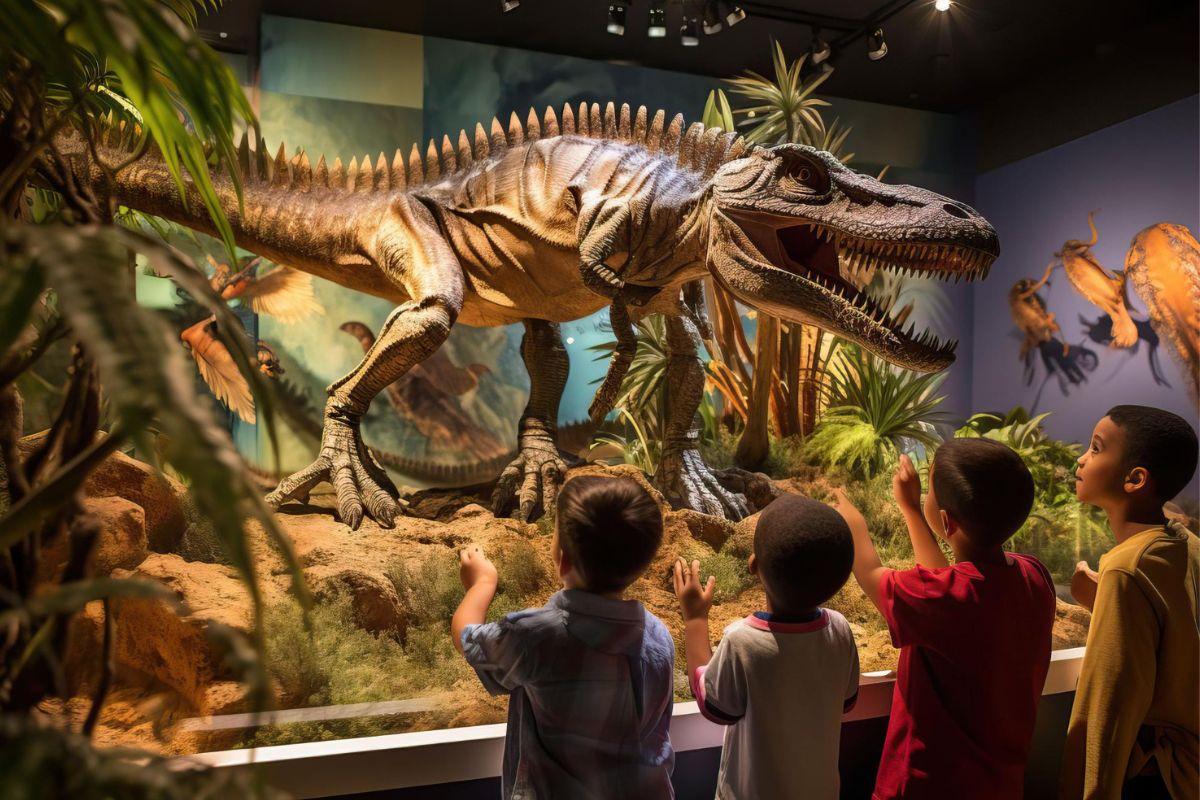
AR allows imagination to intersect with reality.
Source: Freepik
2.The Guggenheim Museum Bilbao in Spain: Immersive Textual Art Across Time and Space with AR
Is the application of AR technology limited to images and videos in museum exhibition planning? Feel the power of combining text with visuals! "LIKE BEAUTY IN FLAMES," exhibited at the Guggenheim Museum Bilbao in Spain, is a new work by renowned American conceptual artist Jenny Holzer. It presents her iconic art based on text through the medium of augmented reality (AR). Jenny's text-based creations explore themes such as gender, morality, war, and society using LED projections, billboards, and public installations, prompting reflection among the public.
This unique artwork was created by her specifically for the Guggenheim Museum Bilbao and offers three different AR experiences, including two ways of experiencing it on-site and a third through an app. Even if you cannot physically visit the Guggenheim Museum in Spain, by simply downloading the app, you can blend the essence of "LIKE BEAUTY IN FLAMES" with any scene in front of your smartphone, whether it's a building or an indoor environment. It's as if the artist herself is telling you a cross-cultural story, immerse yourself! "Imagination" and "reality" alike will dance vividly in your heart.
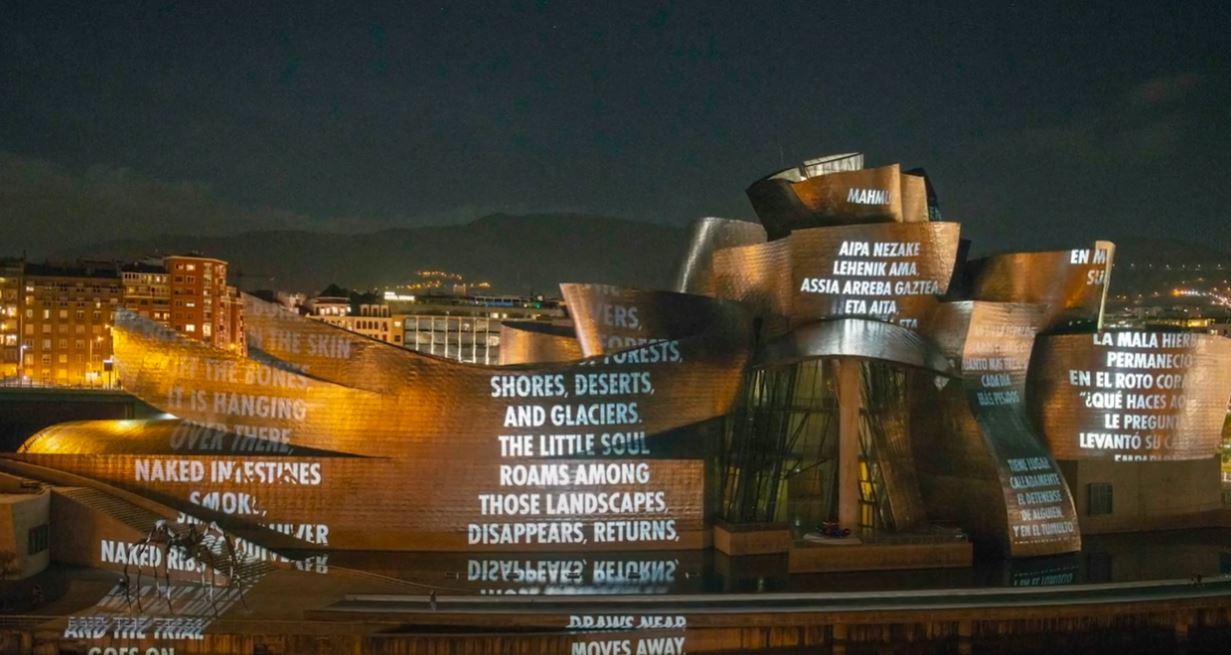
LIKE BEAUTY IN FLAMES" utilizes cutting-edge AR technology, continuing Jenny's expertise in placing thought-provoking written content in the public domain.
Source:Museo Guggenheim Bilbao
3.The National Art Center, Tokyo: AI and AR Recreate Childhood by Cai Guo-Qiang
Cai Guo-Qiang is one of the most renowned contemporary explosive artists. His major retrospective exhibition titled "Cosmic Odyssey - From the Primordial Fireball" at The National Art Center in Tokyo concluded in August. One of the exhibition highlights was an AR (Augmented Reality) installation. Through an interactive setup, visitors could witness an artwork named "Boy Cai," featuring a young boy flying a kite, wandering through the exhibition. The visual and atmospheric impact was captivating. This piece was developed by Cai Guo-Qiang through his custom AI art project called cAI™. When visitors scanned a QR code in the gallery, it activated "Boy Cai," and the lifelike boy moved through the gallery, reminding people to preserve their childhood curiosity.
For Cai Guo-Qiang, who has always been at the forefront of digitizing art, the concern is no longer how art uses digital media for presentation, but whether there is a need to worry about the collaboration between humans and digital technology in the creation process. "The danger in using artificial intelligence to create art is not in AI itself, but in the fact that the outcome of AI-generated art may not be art," he explains.
Perhaps what Cai Guo-Qiang means is that artists should not create art for the sake of technology; art itself should remain the protagonist. "Gunpowder and AI are both elusive and uncontrollable mediums for me, but that's what makes them fascinating. Gunpowder has its own magical vitality but needs a person to ignite it. Now, cAI™ is my shadow and mirror, my partner. Will it break this mirror in the future and become an independent artist?" he ponders.
When visitors scan the QR code in the gallery, it activates 'Boy Cai,' a lifelike young boy who moves through the art gallery.

Using AR interactive devices, the artwork named 'Boy Cai,' featuring a young boy flying a kite, roams through the exhibition.
The image is taken from the Tokyo National New Art Museum's Facebook video.
Sustainable Singapore Art Project Encompassing the Earth through an AR Perspective
Art themes often originate from people's lived experiences to evoke resonance and connections. You may not yet be aware that one-third of global fish resources have been overfished, with 60% of fish resources at the limits of sustainable utilization. If we wish to pass on ocean resources to future generations, should we give Earth a commitment and truly uphold that promise? "Sustainable Singapore" is a project with a vision for Earth's sustainable development, created by 20 Singaporean artists. The visual aspect of the exhibition is filled with vibrant colors, but its communication raises profound reflections. Each artwork conveys various environmental crises.
The exhibition is a collaboration between the MeshMinds Foundation and Artivive, sponsored by the National Arts Council of Singapore. "Sustainable Singapore" features original artworks centered around the theme of the Sustainable Development Goals (SDGs). Each artist employs the AR app Artivive to add layers of animated storytelling to static artworks, ranging from quick loops to complex narrative tales. The aim is to draw attention to a variety of environmental issues that affect not only Singapore but also the world. Taiwanese environmental artist Lee, Kuei-Chih, who has participated in the Iceland Biennale, remarked, "Art itself may not be able to do much, but it can serve as a reminder."

Sustainable Singapore" is the first exhibition to create artworks using Procreate and other digital tools.
The image is taken from an Artivive video.
5.The Keelung Harbor History Museum: AR Reviving the Bustling Port Scene
Taiwan, referred to by 16th-century Portuguese as "Formosa," meaning "beautiful island," but how deep is your understanding of individual islands while living on this land? Keelung Harbor, as the primary maritime hub in northern Taiwan, has played a crucial role as a significant trade port since the late 19th century, despite having a narrower hinterland compared to other Taiwanese ports.
Since the 2000s, it has also developed into a cruise homeport, and you can now see many international cruise ships visiting Keelung Harbor. The colors of this place, once a naval and fishing base, have faded. Why is that? With the changes in time and space, many people visit Keelung for its delicious food and the winding beauty of Jiufen but have never delved into the development history of Keelung Harbor, from the Qing Dynasty and Japanese rule to its post-war revival.
When collaborating with the Keelung Harbor History Museum, King One Design deliberately utilized AR technology applications, combining digital advantages with cultural exhibitions. This brings the large harbor and container ships directly before the audience's eyes. The old scenes of the harbor appear vividly, making learning enjoyable. It guides people of all ages to take a ride on the time machine and go back to the old Keelung Harbor, providing a unique exhibition experience.

Source: Kingone Deign
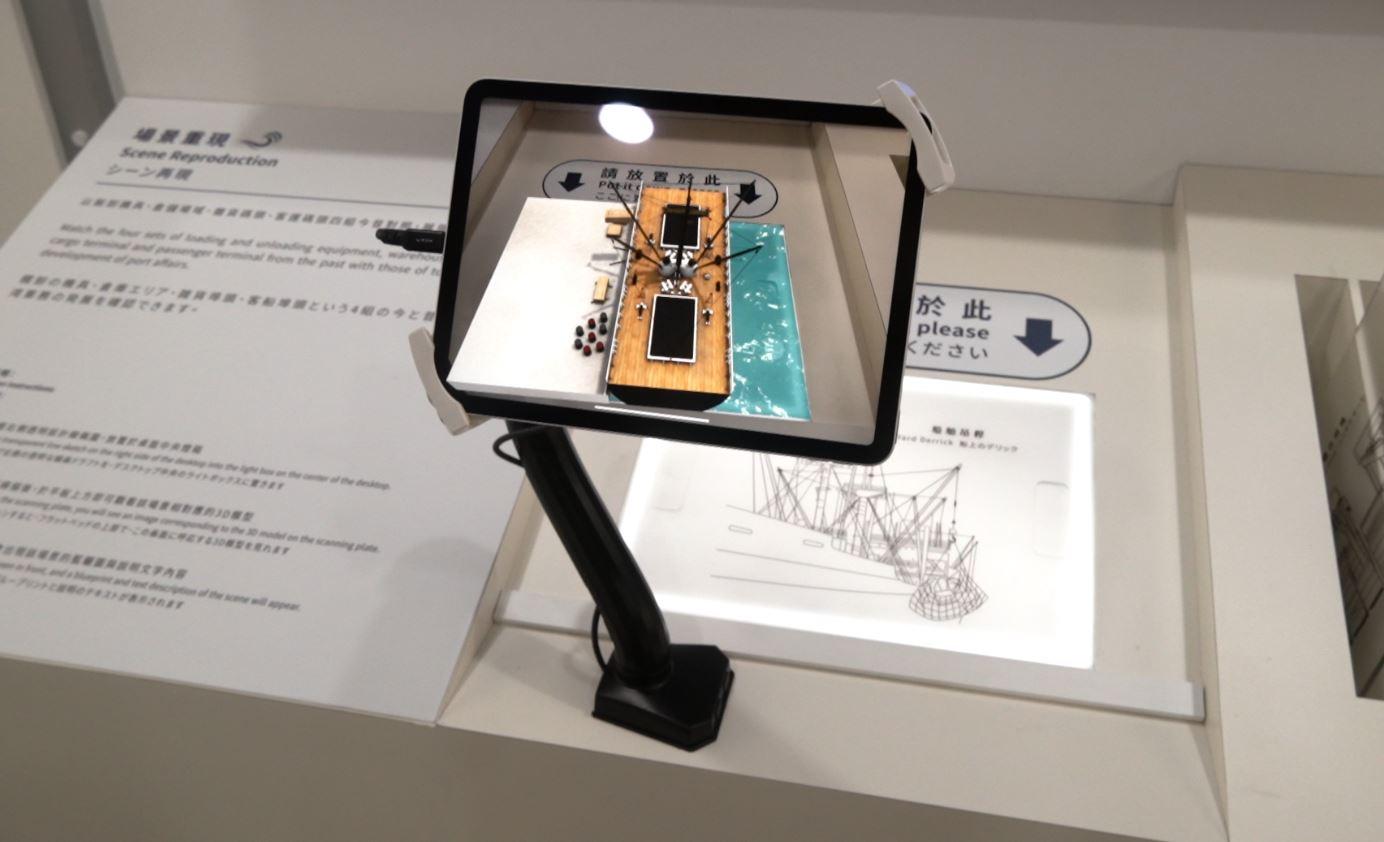
Source: Kingone Design
Combining experiential marketing with AR art exhibitions offers four significant advantages
As Forbes emphasizes, "The best way to attract consumers is to create engaging and emotionally rich experiences that make them want to participate." Victoria Walsh, the program director for Contemporary Art at the Royal College of Art in London, had already discussed in 2014, "Curators who refuse to acknowledge the importance of digital media in an era dominated by 'analog' thinking will quickly become obsolete. Curators of the future must understand the needs and desires of their audience, or the development of the museum itself will stagnate." Next, we will discuss the four advantages of combining AR art exhibitions with experiential marketing in the modern era.
1.Museums Engaging Cross-Generational Audiences with New Media
Museums aim to "augment" audience engagement and enrich the visitor experience through AR augmented reality. Many museums attract families and younger audiences by adding AR fun and games to their exhibits. The younger generation benefits from immersive digital experiences, while older visitors appreciate the easier-to-understand presentation methods and opportunities to learn about new things. This approach, combining new media, not only creatively reaches a more diverse audience but also enhances the depth of content for museums.
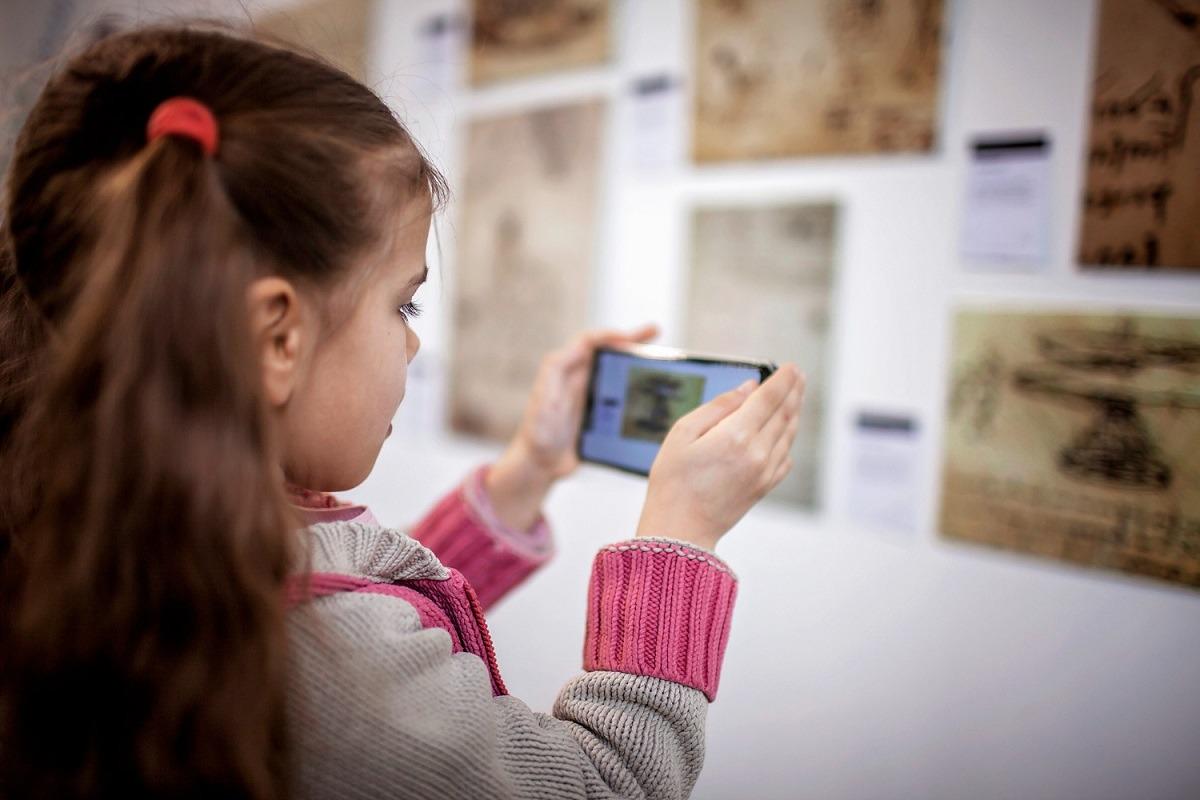
Source: Freepik
2.Keeping Memories Active with Augmented Reality
Through AR technology, audiences can interact with static exhibits, delving deeper into the stories they tell. This participatory experience turns museums into interactive hubs of knowledge. AR also sparks curiosity and a desire to learn in visitors, making it easier for them to retain memories of the exhibition, leaving a lasting impression, rather than just passively receiving information during their museum visit.
3.Extending the Possibilities of Storytelling in Virtual Spaces
AR opens up more personal interpretations in the art-viewing experience, creating an immersive environment that captivates visitors in a rich virtual world. Simultaneously, by using AR to present additional information, plotlines, or multimedia elements, it enhances the viewer's experience and stimulates their curiosity about the artworks and the curatorial stories behind them.
4.From Individual Immersion to Group Immersion
The Pérez Art Museum Miami (PAMM) initially had concerns that using AR technology in their exhibitions might lead to isolation, fearing that visitors would become absorbed in their smartphones. This would be contrary to the curators' and artists' goals of creating shared experiences among people. However, they discovered a different outcome. AR didn't isolate individuals; instead, it encouraged social interaction. When viewers saw the AR visuals and exclaimed, "Wow!" it often led to collaborative use, screen-sharing, and discussions with those around them. It even had the potential to spark enthusiastic conversations between strangers who had never met before. AR exhibitions are not solitary interactions but rather collective immersions.

Source: Freepik
Conclusion: See the Real! AR Art Exhibitions Bridging the Virtual and the Real with Shared Empathy!
Museums worldwide are actively embracing the dissemination of art knowledge, not just through visual means but through the development of participation and interaction. Art is a gentle way of enriching cultural understanding and education, catering to the experiential nature of individual engagement, making it well-suited for the assistance of interactive technology. "The true advantage of interactive technology lies in its ability to enable us to understand and learn in ways that were previously impossible," as mentioned by Forbes. With smartphones serving as the primary interface for AR applications, much like a magic mirror, they can transform imaginative stories into reality while enhancing interaction. This exhibition format breaks the confines of traditional art, allowing viewers to participate and immerse themselves, explore various aspects of artworks, and interpret them in their own way. This not only enriches the art experience but also fosters communication and collaboration between art and technology.
The fusion of virtual and real AR art exhibitions offers a more interactive and engaging experience for both the art world and the audience. Whether in art creation or appreciation, this trend undoubtedly continues to attract artists, curators, and viewers, driving the future development of art. As contemporary art curator Wang Tengchong once said, "Viewing art is a form of interaction, much like watching a play. As we view, the story enters our bodies, continuing to ferment with our lives, forging deeper connections." The blend of virtual and real AR art exhibitions is bringing us into an exciting new era where art becomes an integral part of life, and life becomes an art form that speaks to everyone.

The fusion of augmented reality in art exhibitions is ushering in a new era of shared empathy and resonance.
Source: Freepik
- 1
6 Different Types of Trade Show Booths You Need to Know
Brand Strategy
- 2
Five creative ways to enhance your booth appeal
Tech Life & Trends
- 3
SAVE THIS PAGE! Useful Vocabulary and Sentences for Exhibition Goers and Exhibitors!
Exclusive Perspective
- 4
What is CIS? Corporate Identity Design that goes hand in hand with exhibition design
Tech Life & Trends
- 5
What is the definition of Experiential Marketing? From 5 perspectives, you will get it!
Tech Life & Trends
- 6
[Travel around the world] Hannover, Germany
Industry Trends


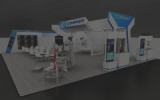










Sustainable Singapore: Revolves around the vision of Earth's sustainable development by 20 Singaporean artists. While the exhibition's visuals are vibrant and colorful, the theme it communicates is thought-provoking. Each piece of artwork conveys various environmental crisis themes